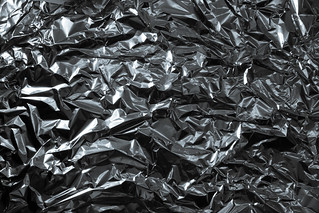May 06th 2019 08:00:36am
Cloth simulations use to be a task for highly skilled technicians that had access to pretty hefty computer hardware. Doing this work on a home machine was not really an option unless you had lots of time to wait, and plenty of CPU power, and RAM in your computer. In most cases that is still true somewhat, but with the advances in computer hardware and software over the decades, that gap have virtually disappeared. More efficient algorithms are being developed, and heavy duty computer hardware is getting more affordable. With a software plugin like X-Particles, made by a company called Insydium, they have somehow managed to make some major strides continuously with particle simulation in Cinema4D.
Here is a more traditional cloth sim I did, but used it to create a visual that is definitely not cloth.
This Cinema4D plugin has vastly improved it’s quality of simulation technology for particles, liquids, dynamics, and cloth year after year. The system they’ve created for cloth simulation has really been simplified to a great degree in the last few releases of the plugin, yet it yields amazing results in both detail, and processing speed.
Breaking Normal Thinking
In most normal circumstances when you think cloth simulation, you think of the silky movement of a dress flowing from the twirl of a dancer, or drapes waving in the wind of an open window. Your mind immediately goes to fabrics like silk, cotton, nylon or clothing, drapes, bed sheets, basically any normal kind of cloth. Something peaceful and elegant in nature usually. These everyday materials are what we understand both in texture, and movement to be cloth.
This cloth simulation is definitely more what you would expect. Some dynamic tearing and cracking give it some life.
Taking the idea further, there are stiffer materials in life that have cloth like notions. Aluminum foil, metal car exteriors, and some plastics can move very cloth like when placed under various forms of force. If you’ve ever seen crinkled aluminum foil it can look pretty close to a bed sheet sometimes with sharper creases. The biggest differences though with some of these materials though is that they don’t flow or unravel themselves once the initial forces have subsided. They will mostly maintain their newly destroyed shape to a degree.

blikss – Foil texture [flickr]

Michael Coghlan – Expensive Wreck [flickr]
So the concept of cloth simulation can be used to create a range of non cloth materials. How the flexibility and fluidity of it’s movement, and the decay speed of it’s movement is set to is what really determines the type of “cloth” we perceive it as.
Then there is me
When you are me however, you think… how can I break this and use it for something it’s not intended for? What random thing will happen if I just apply the techniques to a non-cloth like object. How high can I crank these values? Will I produce something cool? Sometimes it just crashes the application, but other times it produces something different. Something bizarre like this.
This is the process that my mind partakes in on a daily basis. That unknown adventure that brings surprising discovery along the journey. Discovering new solutions or ways to make stuff is what makes it all fun. Most times I am looking to create something as realistic as I can, and other times I’m just making something in the moment. No real plan, just experimenting.
This cloth simulation that I have made, is more like a rubber mask in it’s actual movement. I will take you through the process of retopologizing a 3D head scan using Wrap3, as well as point you to some free online head scan resources. The tutorial will give you a step by step explanation on how to make your own cloth simulation using a 3D head.